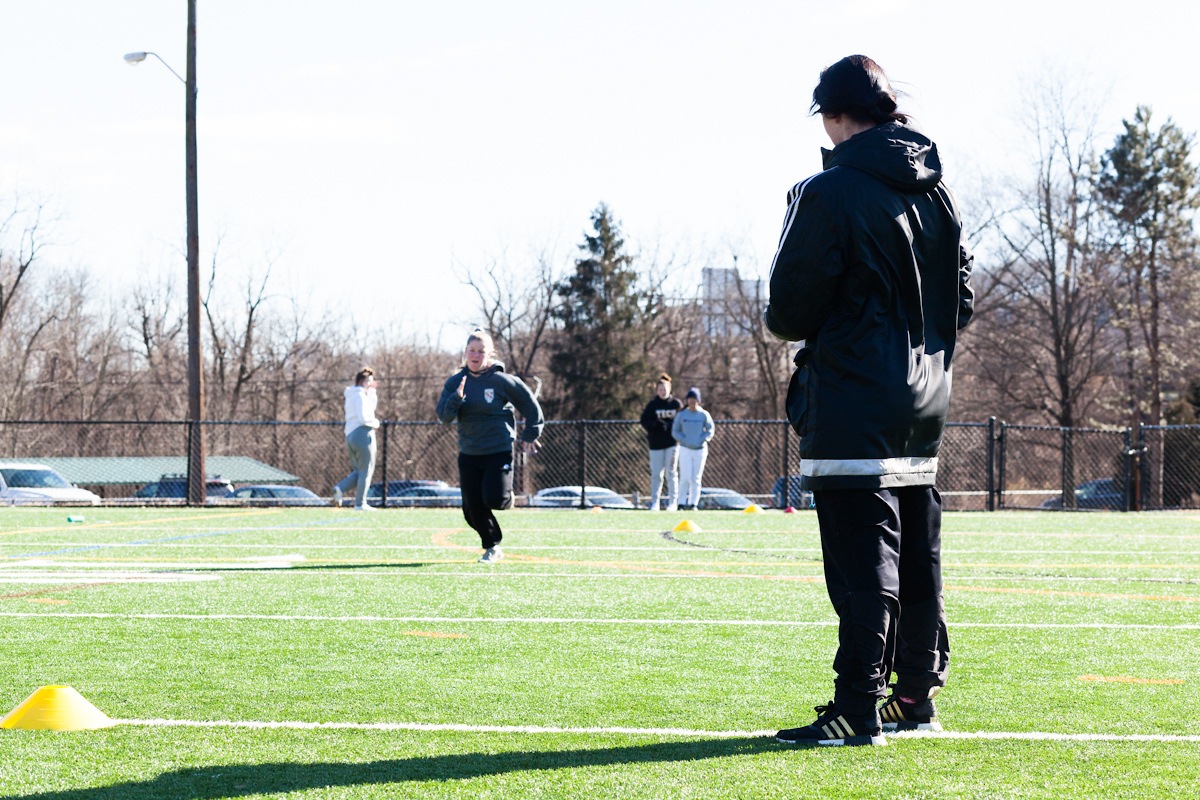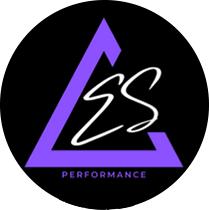
11 Apr Speed Training for Youth Female Athletes: Actually Improving Without Wasting Time
Oftentimes when we watch a speed training session for young girls, it encompasses these things:
– Ladder drills
– Sprints with minimal rest time (aka conditioning, not speed drills)
– Tapping feet in agility rings
While ladder drills and agility rings have their place and can be used as warm-up/movement prep and to build a foundation of coordination and body awareness, they are not the primary contributors of speed development in youth athletes.
It’s always cute to see a self proclaimed “speed coach” on social media posting kids running through obstacle courses and looking like dancers. Worse yet, he isn’t using any timing system to track data and improvement in speed over several months and years.
When it comes to sound speed development, the goal is to create as much vertical force as possible with the fastest ground contact time. In order to get here, girls need to master these basics:
– Contralateral movement (opposite arm and leg)
– Ball of foot strike
– Fast ground contact time (a true plyometric program that trains BOUNCE!)
– Arm control
– Stability of the trunk
According to Weyland et al, human runners reach faster top speeds not by repositioning their limbs more rapidly in the air, but by applying greater support forces to the ground (Weylnad et al 2000). In the acceleration phase, they are creating horizontal forces, then as they reach top speed, they’re producing vertical forces with faster ground contacts. This is why I always discourage ladder and agility ring drills as speed training because athletes are not producing fast ground contacts and as much vertical force as they can. Too, these drills usually last longer than 6 seconds, which is a big no-no in speed energy system development.
Here are some speed drills to work on weekly, year-round to truly become faster:
1. Contralateral Movement
Why this is important: the more coordinated an athlete is, the more they can run with the proper gait patterning during top speed. Expounding further, coordination is the foundation of having rhythm, which is also needed to be fast.
These drills aren’t to be done lazy. Posture is key when coaching athletes up. When posture is upright, shoulders are relaxed, and eyes straight ahead, the lower body tends to do its job.
2. Ball of Foot Strike
With female athletes especially, I see them striking the ground with their toe when they’re performing skipping and marching drills, or they don’t have mobility in the big toe when performing low level plyometrics.
It is critical to make sure athletes understand how to make ball of the foot contract with the ground in every drill they do, so when they run at top speed, they are striking with the correct part of the foot. According to Ken Clark, stiff ground contact on the ball of the foot allows for greater magnitudes of vertical force.
3. Fast Ground Contact Time
Stop having athletes do plyometrics for minutes on end. Plyometrics are meant to work on shortening the phase between the concentric and eccentric muscle action, so ensure quality, fast contacts for explosiveness and speed.
4. Arm Control
While new research is still emerging on the impact of the arms at top speed, it is clear that inefficient and awkward swaying of the arms across mid-line can impact the function of the lower extremity. Too often, I see many young girls swinging their arms across the body, causing their pelvic area to internally rotate and add torque to their knees.
Sprinting is lower body dominant, but according to a study in Strength and Conditioning Journal, arms contributed 22% of the body’s kinetic energy, indicative of the importance of these segments during the pushing phase of the block start (Macadam et al 2018).
So when oozing out a little extra from your athletes as far as improving speed, the arms can serve a great benefit in body control against rotational forces, as well as improved rhythm.
You can improve arm mechanics by taking the legs out of the equation, then eventually focusing on clean arm action in more challenging drills like marching and skipping variations in new planes of motion.
5. Stability of the Trunk
A stable core is not a ripped six pack.
According to Serge Gracovetsky in The Spinal Engine, “the spine and its surrounding soft tissues has evolved from being the primary source of power to that of a controller of the power delivered by the hip extensors.”
The core musculature that surrounds the spine and supports it, enhances posture as well as allows for more controlled movement through the rest of the limbs.
The core musculature that surrounds the spine and supports it, enhances posture as well as allows for more controlled movement through the rest of the limbs. Share on XHere are some bang-for-buck core movements that sprinkle in a nice contralateral component:
Given coaches have minimal time with athletes, it is paramount to incorporate speed drills that actually address the kinematics of speed development, as well as build a more an efficient moving, stronger and powerful athlete.
Get the industry’s best speed timing system to improve speed and track improvements HERE
Work with Erica in Tampa and Lutz Florida for speed, agility, and strength training, OR late stage ACL rehab (must be at minimum 3 months into physical therapy and post-surgery): BOOK Assessment
Need more personalized help from Erica? BOOK A CONSULT HERE

Interested in Remote Training for Female Athletes? BOOK A CONSULT HERE
Get Erica’s book FEMALE ATHLETE HIGH PERFORMANCE
References
Gracovetsky, S. (2008). The spinal engine. In The spinal engine (p. 349). Montreal, Quebec: Serge Gracovetsky.
Macadam, Paul & Cronin, John & Uthoff, Aaron & Johnston, Michael & Knicker, Axel. (2018). The role of arm mechanics during sprint-running: a review of the literature and practical applications. Strength and Conditioning Journal. 40. 1. 10.1519/SSC.0000000000000391.
Weyand, P. G., Sternlight, D. B., Bellizzi, M. J., & Wright, S. (2000). Faster top running speeds are achieved with greater ground forces not more rapid leg movements. Journal of applied physiology (Bethesda, Md. : 1985), 89(5), 1991–1999. https://doi.org/10.1152/jappl.2000.89.5.1991


Megan
Posted at 11:08h, 25 MayLoving your content!
Are your girls training with no shoes to build more natural foot/ankle strength or just a break from cleats?
erica
Posted at 21:55h, 25 MayThanks so much, Megan! And yes to build their foot and ankle mobility as well as work on proprioception of the foot nerves.